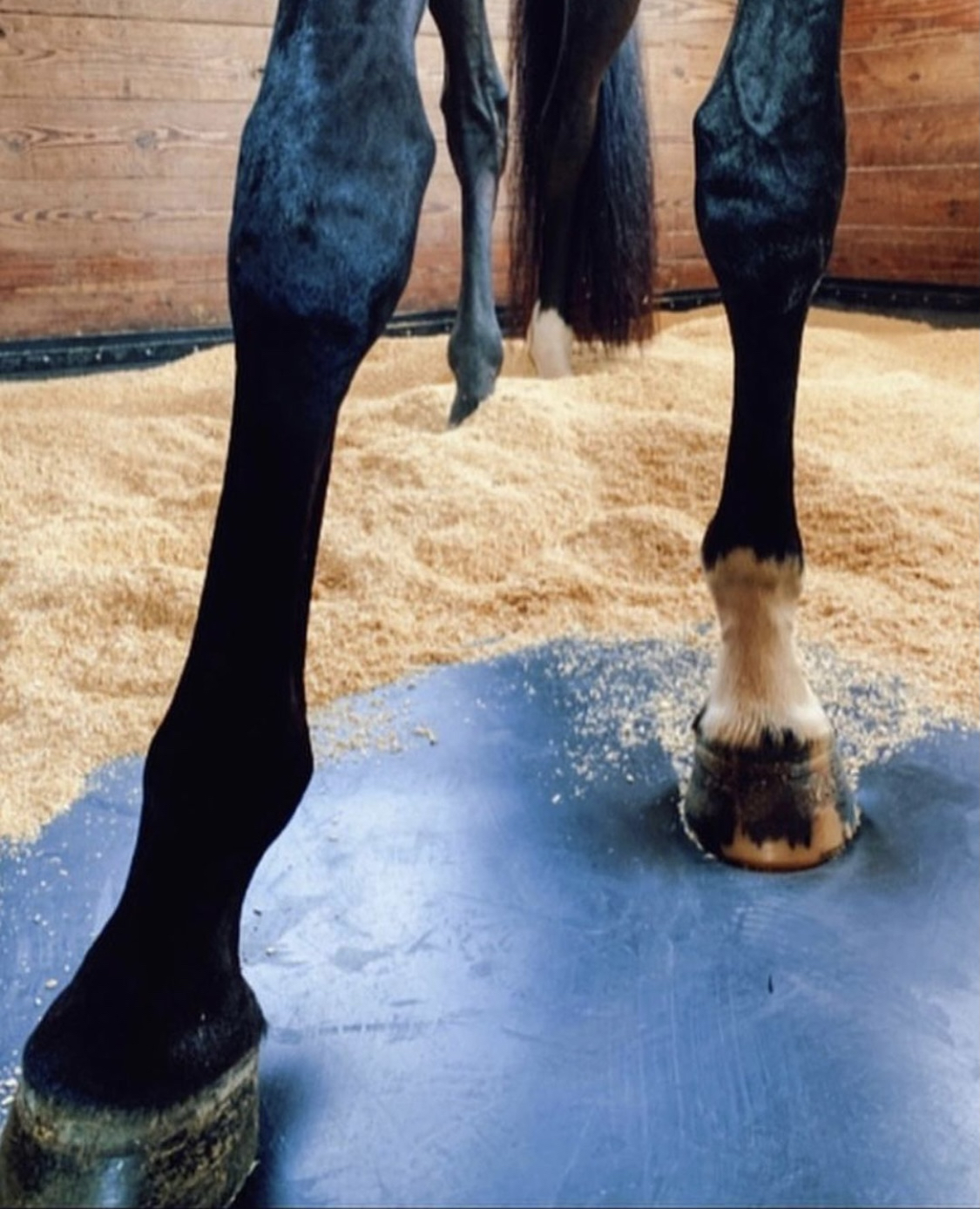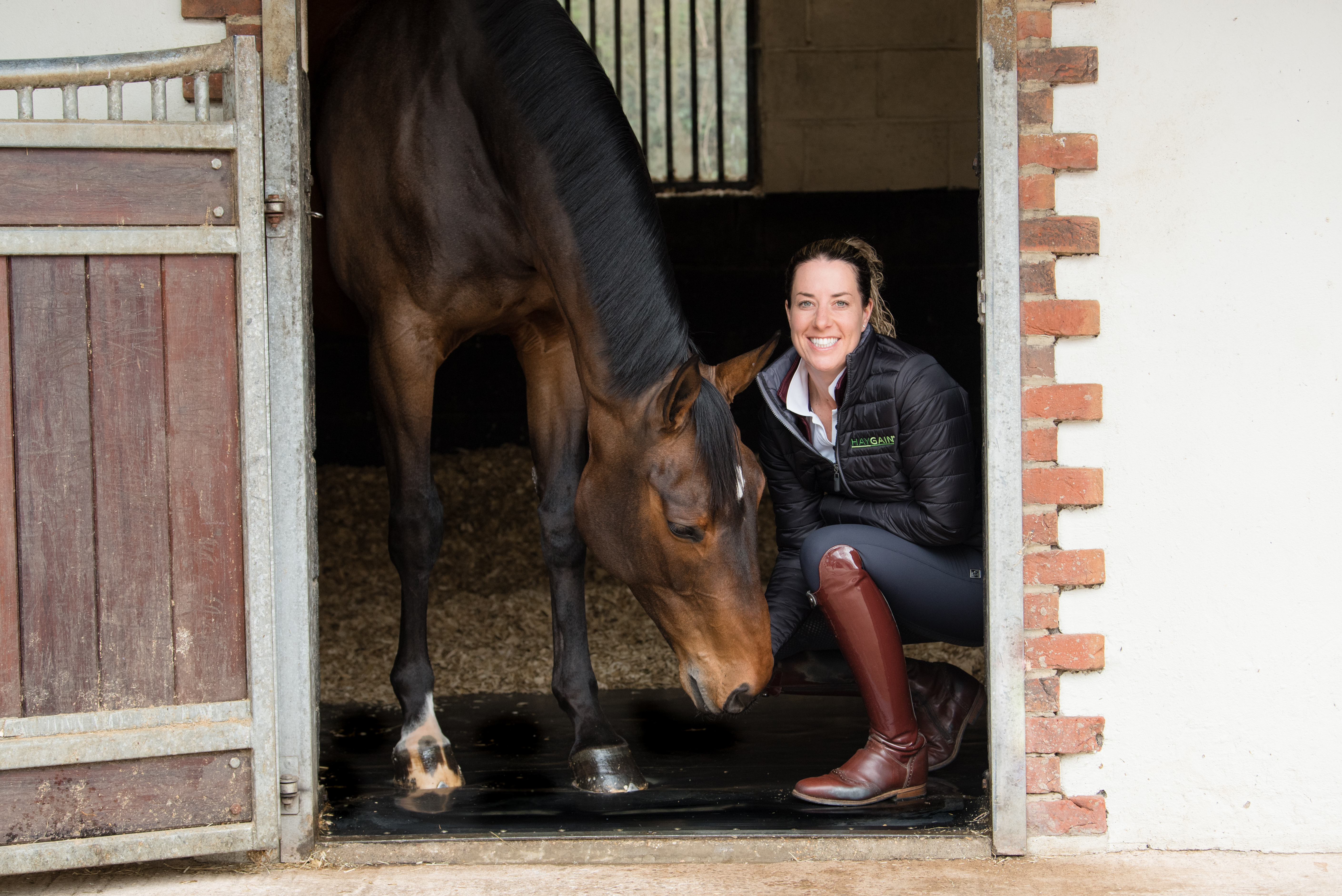Posted: 4th May 2023 | Back to news feed


Leave flooring considerations to the last at your own peril!
by Kim F Miller
Stall flooring isn't the sexiest subject among the many considerations in building or updating a barn. But leave it to the last at your peril, counsels renowned barn architect John Blackburn.
As the title of one of his most popular books, Healthy Stables by Design, suggests, Blackburn and his team at Blackburn Architects PC prioritize horse health every step of the way. The owners' goals for their stable and the demands of their site are equally important.
Because stall flooring impacts horse health and owners' goals, it should be determined at the outset. Over 30 years, Blackburn has constantly refined what is now a proprietary questionnaire for owners to complete as step-one in the process. The answers are critical to the firm’s work and help owners identify priorities and allot budget.
How stalls will be used, by what kind of horses and for how much of the day are key questionnaire points. Leaving flooring considerations 'til late in the planning process can be costly. Most options require leveling the base, pouring concrete, compacting the base material and/or laying a grid or creating another means of drainage. Re-doing that after the walls and the rest of the stable structure are up is an expensive, laborious inconvenience. How the stalls will be maintained and by whom is another important factor influencing flooring choice.
Options Abound
Stall flooring ranges from the most basic: clay or stone dust to the most expensive options that include cushioned flooring that is sealed to the stall walls and custom-made interlocking rubber bricks.
Horse health-driven flooring priorities are safety, comfort and how it impacts stable air quality. Safe flooring is a stable surface with traction to prevent slipping when horses walk, lie down or stand up. It should be level at installation and constructed to stay that way even with hard keepers that may paw or pace the floor. Bases made of compacted dirt or stone dust will eventually form depressions, even when installed with plastic grid systems to aid drainage and ease cleaning. Proper maintenance is critical.
Flooring can play a part in biosecurity measures, too. Stall surfaces that can be disinfected help minimize spread of viruses and other pathogens. Cushioned flooring that requires less bedding means less material that can contain shed viruses.

Cushion & Clean Air
Comfort and joint health are attained by cushioned flooring or the use of enough bedding to create cushion. This is important for rest and sleep and to reduce wear and tear on joints. A level floor also encourages horses to distribute their weight evenly.
Surfaces that emulate a gymnasium mat in their degree of give require horses to make tiny muscle movements to maintain their balance. The resulting "proprioception" has the therapeutic effect of prompting blood flow and minimizing inflammation.
Flooring's impact on barn air quality is often overlooked. "Odors and bacteria accumulate in the barn," Blackburn explains. "The horse's respiratory system is so sensitive; we do everything we can to protect it." Situating and designing the whole barn for ventilation and air circulation are crucial for all of Blackburn’s designs.
Sealed Surfaces
Cushion and clean air priorities favor flooring with a one-piece sealed top cover, such as Haygain's ComfortStall. This system prevents urine and other fluids from seeping through and becoming a bacterial bouillabaisse at the stall base. Even well-snugged stall mats, a less expensive option, allow fluid to seep through to the base.
Durable, sealed, one-piece top covers also enable disinfection. The Cornell University Veterinary Hospital has had ComfortStall in its post-surgery stalls for over 10 years, partly because they are easily disinfected between patients.
Bedding is major contributor to bad barn air. Wood shavings are full of respirable dust and straw was found to promote fungal growth in a 2018 study of Inflammatory Airway Disease in active sport horses. Flooring that requires less bedding equals less dust and less time, labor and costs of buying and removing bedding. It's easier on the environment, too.
No flooring lasts forever, but investments up front usually correlate to longer life.
An Installer's Vantage Point
Independent contractor Graham Russ views stall flooring from a unique perspective. Over several years of installations in new stables and flooring replacements in existing barns, he sees more owners making a substantial upfront investment with the realistic expectation of a return in the form of horse health and maintenance savings.
"A lot of my installs are replacing the 4' by 6' rubber mat puzzle pieces," says Russ, who is based in Ft. Worth, Texas. "They usually have cracks between each mat. They provide little cushion themselves and they are usually put down over concrete or gravel. That lack of cushion really causes problems for horses."
It's often pocketbook pressure that initially turns barn owners to the ComfortStall installations that he's doing more of the last few years. "People go from seven bags of shavings per stall to one bag," Russ explains. "This product pays for itself in nine or 10 months. It sells itself."
ComfortStall's cushion comes mainly from a layer of proprietary orthopedic foam while other types use geo-textiles and a crumb rubber-filled, channeled mattress for cushion. The mattress-type flooring systems can look the same to the casual observer but not to Russ, who has installed and observed the performance of various methods and materials. "I work at barns where horses have pawed through the mats all the time," he says. "I've never seen a horse paw through ComfortStall."
Healthy Returns On Investments
Vermont dressage rider Vanessa Shayan's flooring decision was influenced by seeing ComfortStall at a veterinary hospital. After installing it for six horses at her Delara Farm, LLC, in the Champlain Valley, the first thing she noticed was how her horses reacted to it. "The most profound thing is to see the difference in their head and neck muscles and to watch them stand on it in a deep state of relaxation."
Supporting her horses' health and comfort is the priority in every detail of Delara Farm. "I understand how important it is to get the proper amount of sleep and rest," she explains.
Vanessa's own health issues influence her perspective, too. Scoliosis and past accidents have made the equestrian keenly aware of spinal maintenance and function and its role in overall health. "I know how important proper shoes and footing are."
She sees most of her horses napping more and feels their relaxation in the barn translates to arena work. "The investment in ComfortStall was one of the biggest things I could control for my horses’ well-being," she concludes. "I invest so much into them as athletes, and I’d be remiss to not be concerned about their comfort when stalled. They show me in their behavior how much of a difference it makes."
No matter the scope of a barn building or updating project, a flooring-first approach lays the foundation for years of horse health returns on the investment.
For more information visit haygain.co.uk
The Equestrian Index newsfeed is compiled from articles submitted by advertising members and expresses the opinions of those members. Watsons Directories Ltd shall not be held liable for any inaccuracies or mis-statements therein.